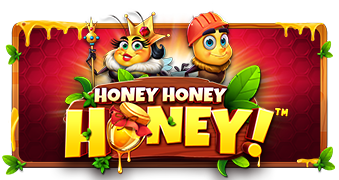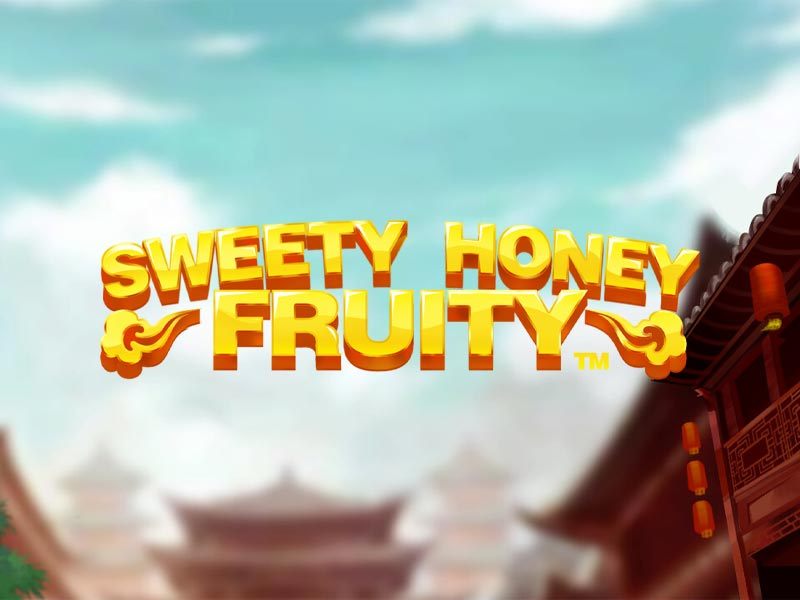Bees are productive insects that make the environment bloom. Thanks to their ability to help pollinate flowers, as well as produce honey, bees play an important role in nature. However, if a hive colonizes your home or business, it could spell costly property damage for you. When your property is overrun with bees, removal is a viable solution. Carolina Wildlife Removal of Raleigh, North Carolina, delivers effective removal solutions that protect you, your property, and the animals. Count on us to provide honey bee removal that respects the integrity of your property – as well as the hive.
Protect Your Property and Environment with Honey Bee Hive Removal
When it comes to honey bee removal, Carolina Wildlife Removal takes a sensible approach to pest control. Since honey bees play such an important part in the ecosystem, it is necessary to adopt the right approach to ensure they are able to follow the path of Nature. However, there are times when bee hives show up where you do not want them. While a necessary space for bees, hives can cause property damage that will require the work of contractors and craftsmen. Prevent the spread of a hive in your home with our honey bee hive removal service.

The Intricacies behind Bee Hive Removal
Professional bee hive removal enables you to have a safe and whole home while protecting the environment. When it comes to honey bee behavior, each member of the colony has a specialized role to play. Therefore, an improperly disposed hive can spell disaster for an entire population of bees – and the surrounding flora that depends on their activity. Count on Carolina Wildlife Removal to carefully survey and move any bee hives that have developed on your property. They have the training and experience to safely remove live bees and their hives. As a result, you can remain safe from the threats of stings and property damage.

Honey Bee Swarm Removal That Lasts
A honey bee swarm is composed of workers, drones, guards, and a queen, who all work together. As such, when a member of the swarm or a part of the hive is attacked, the honeybees will react naturally and protect what belongs to them. Due to this hive mentality, it is always a practical decision to count on wildlife removal specialists. The average bee hive contains more than 200 pounds of honey and about 50,000 bees. Carolina Wildlife Removal has the skill to safely remove the hive and its occupants.
Eighteen-year-old Molly Carlson manages 12 hives across the Triangle, each with about 30,000 bees. More Than 75% of Honey Bought In Local Raw Honey (Raleigh, Carrboro, Welcome: buy, organic, live) - Raleigh, Durham, Chapel Hill, Cary - North Carolina (NC) -The Triangle Area - City-Data Forum City-Data Forum U.S. Forums North Carolina Raleigh, Durham, Chapel Hill, Cary. About The Honey Do Husband. I have lived in the Triangle area my entire life and currently live in northwest Raleigh. I’ve worked professionally as a handyman for 6 years, although I’ve been handy with tools and mechanically-inclined all my life. As a child and young man I worked in my father’s business – H.L. Bunn’s Garage in East.
Ensure your safety and peace of mind with the help of Carolina Wildlife Removal's team of honey bee swarm removal professionals. The team works together to relocate the swarm, and their hive, to a location that is away from your home. Often times, hives are found in between floor joists, walls, or near your home’s roof line. All bees collected during the hive removal process are donated to the NSCU or a local beekeeper. After completing the initial service, Carolina Wildlife Removal can direct you to a qualified repairman to repair the affected area, leaving it good as new. Each hive removal service is backed by a two-year, “bee-free” guarantee.
Contact us today to request a consultation for honey bee hive removal. Carolina Wildlife Removal proudly serves customers throughout Raleigh, Morrisville, Cary, Holly Springs, and Apex, North Carolina.
Information on common floral sources in North Carolina.
| Mountain Region | Average Mountain Bloom Period | Pollen | |||
| Plant Name | Scientific Name | Starts | Days | Ends | |
|---|---|---|---|---|---|
| Red Maple | Acer rubrum | 5-Mar | 35 | 9-Apr | C0B095 |
| Sumac | Rhus spp. | 8-Apr | 146 | 1-Sep | F6BB43 |
| Dandelion | Taraxacum officinale | 1-May | 50 | 20-Jun | F29D4B |
| Black Gum | Nyssa sylvatica | 5-May | 10 | 15-May | F7DC6F |
| Holly | Ilex spp. | 8-May | 15 | 23-May | F7DC6F |
| Black Locust | Robinia pseudoacacia | 15-May | 14 | 29-May | DAF7A6 |
| Raspberry | Rubus spp. | 17-May | 17 | 3-Jun | DCDCDC |
| Persimmon | Diospyros virginiana | 22-May | 15 | 6-Jun | FAD749 |
| Tulip Poplar | Liriodendrum tulipifera | 25-May | 23 | 17-Jun | FCF3CF |
| Ladino, White Clovers | Trifolium repens | 29-May | 51 | 19-Jul | 859D6C |
| Sweet Clover | Melilotus spp. | 8-Jun | 53 | 31-Jul | |
| Basswood, Linden | Tilia spp. | 20-Jun | 23 | 13-Jul | FFCE19 |
| Sourwood | Oxydendrum arboreum | 25-Jun | 25 | 20-Jul | FCF3CF |
| Aster | Aster spp. | 30-Aug | 40 | 9-Oct | F8CD76 |
| Piedmont Region | Average Piedmont Bloom Period | Pollen | |||
| Plant Name | Scientific Name | Starts | Days | Ends | |
|---|---|---|---|---|---|
| Red Maple | Acer rubrum | 1-Feb | 40 | 12-Mar | C0B095 |
| Sugar Maple | Acer saccharum | 5-Mar | 25 | 30-Mar | DAF7A6 |
| Dandelion | Taraxacum officinale | 15-Mar | 60 | 14-May | F29D4B |
| Sumac | Rhus spp. | 3-Apr | 151 | 1-Sep | F6BB43 |
| Alsike Clover | Trifolium hybridum | 4-Apr | 102 | 15-Jul | |
| Blackberry | Rubus spp. | 10-Apr | 20 | 30-Apr | D3D3D3 |
| Crimson Clover | Trifolium incarnatum | 10-Apr | 25 | 5-May | |
| Ladino, White Clover | Trifolium repens | 14-Apr | 102 | 25-Jul | 859D6C |
| Tulip Poplar | Liriodendrum tulipifera | 25-Apr | 29 | 24-May | FCF3CF |
| Black Gum | Nyssa sylvatica | 26-Apr | 14 | 10-May | F7DC6F |
| Black Locust | Robinia pseudoacacia | 27-Apr | 10 | 7-May | DAF7A6 |
| Vetch | Vicia spp. | 28-Apr | 46 | 13-Jun | |
| Holly | Ilex spp. | 30-Apr | 15 | 15-May | F7DC6F |
| Raspberry | Rubus spp. | 30-Apr | 20 | 20-May | DCDCDC |
| Privet | Ligustrum spp. | 8-May | 23 | 31-May | DAF7A6 |
| Persimmon | Diospyros virginiana | 20-May | 13 | 2-Jun | FAD749 |
| Sweet Clover | Melilotus spp. | 28-May | 37 | 4-Jul | |
| Sourwood | Oxydendrum arboreum | 10-Jun | 20 | 30-Jun | FCF3CF |
| Heartsease, Smartweed, Knotweed | Polygonum spp. | 4-Jul | 126 | 7-Nov | FCF3CF |
| Goldenrod | Solidago spp. | 8-Aug | 67 | 14-Oct | FAD749 |
| Aster | Aster spp. | 25-Sep | 35 | 30-Oct | F8CD76 |

| Coastal Region | Average Coastal Plain Bloom Period | Pollen | |||
| Plant Name | Scientific Name | Starts | Days | Ends | |
|---|---|---|---|---|---|
| Red Maple | Acer rubrum | 20-Jan | 45 | 5-Mar | C0B095 |
| Sugar Maple | Acer saccharum | 25-Feb | 25 | 21-Mar | DAF7A6 |
| Blackberry | Rubus spp. | 1-Mar | 46 | 16-Apr | D3D3D3 |
| Dandelion | Taraxacum officinale | 5-Mar | 55 | 29-Apr | F29D4B |
| Sumac | Rhus spp. | 1-Apr | 153 | 1-Sep | F6BB43 |
| Huckleberry | Gaylussacia spp. | 5-Apr | 32 | 7-May | |
| Tulip Poplar | Liriodendrum tulipifera | 17-Apr | 30 | 17-May | FCF3CF |
| Tupelo Gum | Nyssa aquatica | 20-Apr | 30 | 20-May | |
| Raspberry | Rubus spp. | 20-Apr | 40 | 30-May | DCDCDC |
| Holly | Ilex spp. | 24-Apr | 16 | 10-May | F7DC6F |
| Black Gum | Nyssa sylvatica | 27-Apr | 24 | 21-May | F7DC6F |
| Gallberry | Ilex glabra & coriacea | 12-May | 28 | 9-Jun | DAF7A6 |
| Sourwood | Oxydendrum arboreum | 1-Jun | 20 | 21-Jun | FCF3CF |
| Pepperbush | Clethra alnifolia | 1-Aug | 20 | 21-Aug | F7DC6F |
| Goldenrod | Solidago spp. | 1-Aug | 85 | 25-Oct | FAD749 |
| Aster | Aster spp. | 30-Sep | 40 | 9-Nov | F8CD76 |
A few notes on plants. Consider all information presented here as approximate. Plants are COMPLICATED. Species within a genus may differ wildly in their pollen colors and blooming times, despite being apparently identical plants. Weather and microclimate may entirely alter bloom time to what is normally expected.

Pollen shown white without a number means the color is unknown. The numbers refer to hex codes, useful for displaying color electronically. Colors (again approximate) were compiled from
- Garden Plants for Honey Bees, P. Lindtner. Wicwas Press, Kalamazoo MI, 2014.